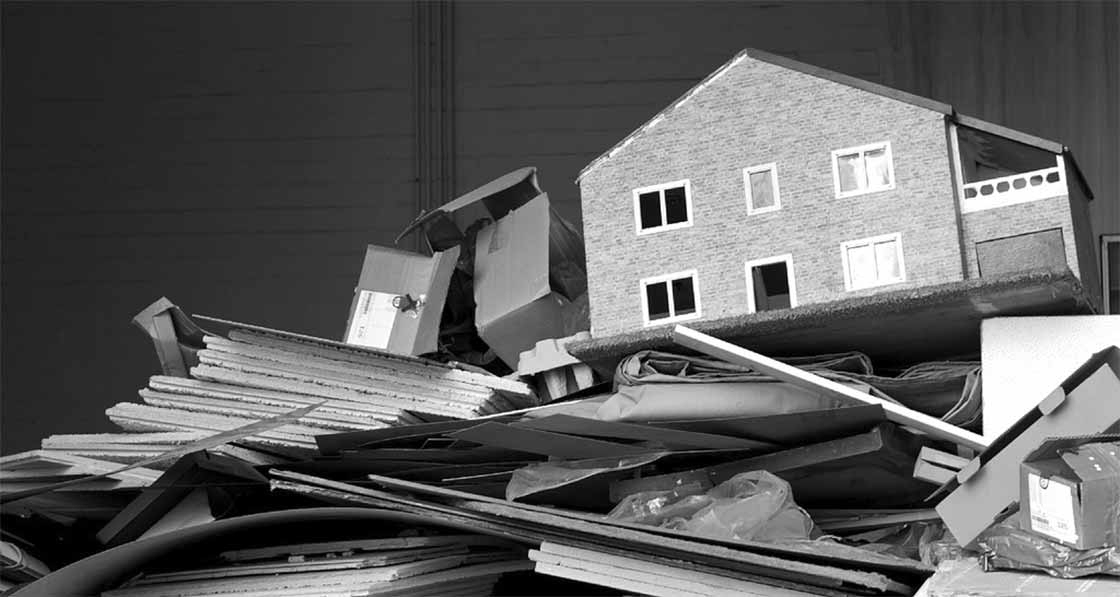
- Blogs
- Posted
Government ‘Help to hoard' scheme - why we’re not building homes
With Ireland’s housing crisis continuing to escalate, government policies may be further exacerbating the problem, argues Mel Reynolds.
This column was originally published in issue 22 of Passive House Plus magazine. Want immediate access to all back issues and exclusive extra content? Click here to subscribe for as little as €10, or click here to receive the next issue free of charge
A casual observer would be forgiven for thinking that we are ‘back on the sauce’ in the property sector, after years of abstinence.
House prices and rents are increasing in double digits and a reintroduced first time buyers grant has stoked price inflation in recent months – developers and builders should be ramping up supply. However, despite numerous concessions to construction lobby groups, new housing activity remain stubbornly low. Just 4,200 new homes were sold nationwide in 2016 and only 920 were to first time buyers.
Land hoarding: Incentives & penalties
Brendan Daly, CEO of Nama, recently accused the funds to which Nama has sold billions of euro worth of property assets, of now hoarding the lands to “beef up their profits” – only 6% of land bought from Nama has been built on – 3,000 homes out of a potential 50,000.
The reasons why so little is happening has nothing to do with planning or construction costs. A combination of government policy measures, affectionately termed the ‘Help-to-Hoard’ scheme, is a heady cocktail of incentives and penalties that have encouraged investors to purchase and hold massive tracts of serviced residential development land. There are three main ‘cocktail’ ingredients:
Capital gains tax exemption 2012
In 2012 government introduced incentives at the lowest point in the property cycle to get private investors to buy assets at fire-sale prices and hold for 7 years. Section 604A of the 2012 Finance Act provides relief from capital gains tax for property bought from December 2011 to the end of December 2014. Zero gains tax applies to property or sites purchased within these dates if held until January 2019 – for a minimum period of seven years.
Investors piled in, buying large land holdings controlled by Nama. From a low base, land prices doubled from 2012 to 2016 according to the Society of Chartered Surveyors. Activity was subdued in this period – just 8,800 net additional homes were added to stock in five years..
Vacant site levy 2016.
The vacant site levy was proposed in 2016 to penalise owners of vacant land and stimulate activity. Although introduced in January 2017 the tax will only be charged from 2019 onwards, by when land speculators may have exited the market. The levy is on a sliding scale – the bigger the loan attached to the land the lower the levy due. The maximum is 3% based on a 2018 land value. Given that most investors are privately funded, balance sheet ‘interest roll-up’ payments will ensure many owners will pay between zero to 1.5% site levy – or 0.21% per annum on average. Meanwhile land prices are increasing by 15% per annum and are set to double over the next 5 years..
Capital gains tax exemption 2016
Only 6% of land bought from Nama has been built on – 3,000 homes out of a potential 50,000.
Remarkably the government introduced a further tax break for property investment vehicles in the Finance Bill later on in the same year, supposedly to encourage funds to buy up and develop more land for housing. Section 739k of the 2016 Finance Act applies to funds designated as Irish real estate funds (IREFs), including so-called qualifying investor alternative investment funds (QIAIFs) and Irish collective asset-management vehicles (ICAVs). Zero capital gains tax applies to property held for a period of five years from the date it was acquired. Revenue officials predicted this would act as a “lock on the residential market”. Coincidentally, the date for investors to pivot out of land positions is 2019/ 2020 and no capital gains tax is incurred if assets are held for the full period. Planning & Development (Amendment) (No. 2) Bill 2017 The cherry on top is the recently passed Planning Bill 2017 (casually termed the “don’t use it, don’t lose it” Bill). Existing 10-12 year old extended planning permissions can now be extended further, minimising planning risks and removing soft costs for owners coasting to 2020. This will do the opposite of urging land owners to build out existing permissions..
Implications
There are significant competitive disadvantages to building. When investors buy and hold for years they pay zero capital gains tax. A regulated investment fund does not pay any tax on gains or otherwise – the tax is levied when investors redeem from the fund. When a builder purchases land, builds and sells units, any land value gain is taxed at 33%. Why build, assume development risk, high financing costs and generate a significant tax bill when one can wait, inflate and pay zero in 2019?.
What to expect
Expect little increase in new home supply till after 2020. There were just 182 first time buyers of new homes in the first quarter of 2017, similar to last year. Expect current trends to continue – house prices and rents to increase and further pronounced increases in homelessness.
Construction lobby groups suggest that there is capacity to build on these sites at present. Unfortunately you can’t build on what you don’t own and investors, not builders, control the development land market. Government policy has been so effective in incentivising land speculation that residential developers, builders, potential owners and tenants have been ‘locked out’. The champagne tent is reserved for land speculators at present – everyone else is on the outside looking in.



